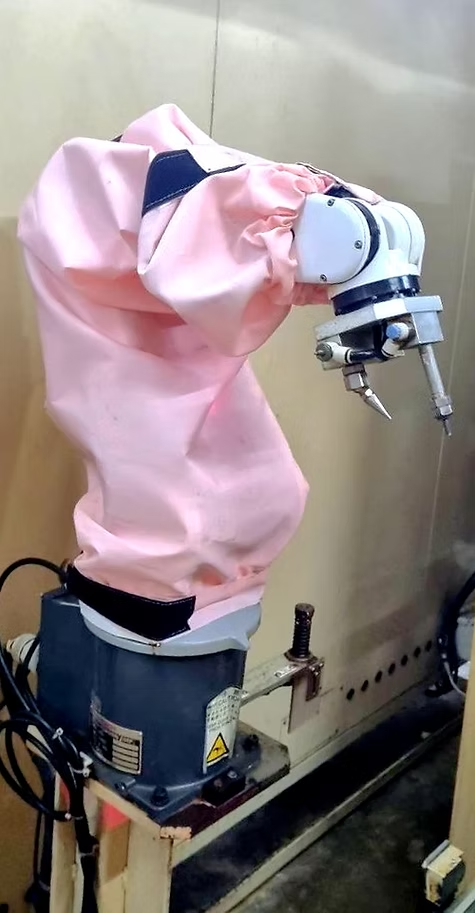What’s the Difference Between a Robot Cover and an Airbag Fabric?
- kittipatcentrotec

- Oct 28
- 2 min read

Robot Cover and Airbag Fabric both play key roles in improving efficiency and extending the lifespan of various equipment. However, many people may wonder — what are the differences between these two protective materials? Let’s take a closer look.
Features and Uses of Robot Covers

A Robot Cover is specifically designed to protect robots from environmental factors that can cause damage, such as heat, dust, or humidity in industrial facilities.These covers can be custom-made to fit the size and model of each machine, making them suitable for many different applications.They are lightweight yet durable, providing long-lasting protection in demanding conditions.
Key advantages of Robot Covers include:
Heat and dust protection: Helps protect robots from high temperatures and industrial dust.
Extended service life: Reduces wear and tear, helping robots perform at full efficiency.
Lightweight and durable: Made from strong materials without adding unnecessary weight.
Installing a robot cover ensures better machine endurance and allows robots to operate efficiently even in challenging environments.
Features and Uses of Airbag Fabric
While Airbag Fabric is mainly used in vehicle safety systems, its properties and applications are quite different.The fabric used to make airbags is extremely tough, durable, and lightweight — ideal for applications where weight reduction is crucial, especially in the automotive industry.
Key features of Airbag Fabric include:
Lighter than nylon tarpaulin: Up to three times lighter than standard nylon fabrics, perfect for lightweight applications.
Durable and waterproof: PU-coated fabric provides excellent water resistance and a lifespan of around 4–5 years.

Resistant to harsh environments: Designed to withstand extreme conditions and provide maximum safety during vehicle collisions.
Airbag fabrics are typically used in systems that need to absorb impact forces and enhance passenger safety in vehicles.
Comparison and Key Differences
Although Robot Covers and Airbag Fabrics share similarities in protecting against damage, their purposes are distinct.
Robot Covers are designed to protect industrial machines from heat, dust, and humidity.
Airbag Fabrics, on the other hand, are used to protect people by absorbing impact during vehicle collisions.
Both materials are durable and purpose-built for protection, but each is suited for specific applications depending on the working environment.
Ultimately, Robot Covers and Airbag Fabrics are both innovative materials engineered to enhance safety and efficiency — whether in industrial settings or automotive systems. They play vital roles in extending equipment lifespan and preventing damage effectively.
.png)






Comments